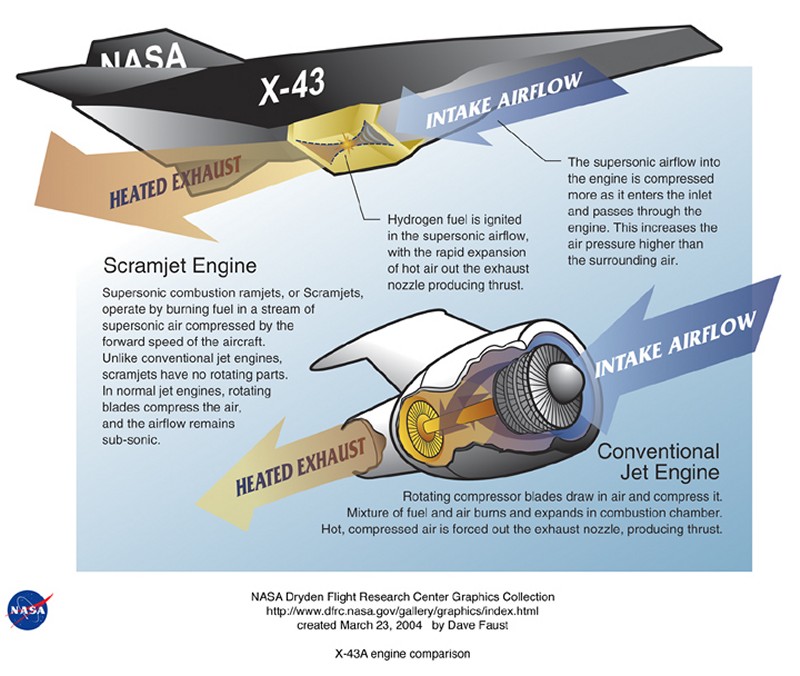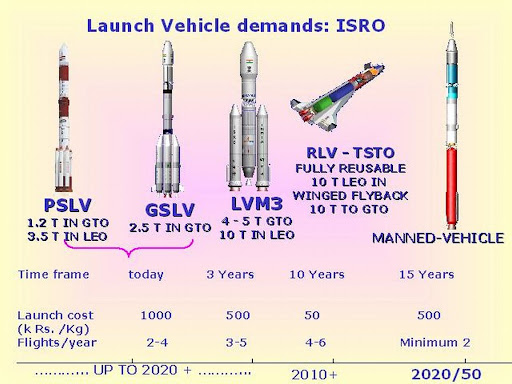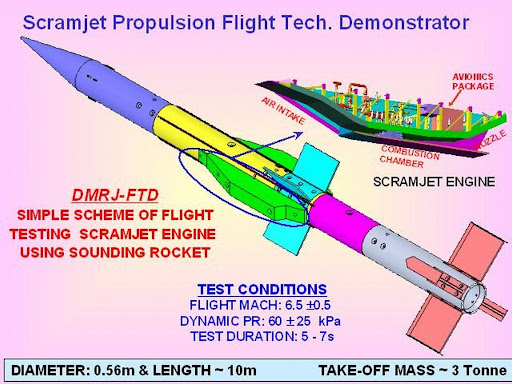How low can costs go using chemical propulsion?
How low can costs go using chemical propulsion?
Elon Musk claims that, using fully reusable hardware, the cost of launching payloads to space could eventually go as low as $10 per pound. Other low-cost proposals for putting payloads into orbit have been covered by Next Big Future, including airships to orbit as well as laser propulsion and startram. Aerospace engineer Dr. Ajay Kothari of the Astrox corporation has spent the past decade thoroughly studying various concepts for reducing space costs. In an interview with Sander Olson for Next Big Future, Kothari argues that vertically launched scramjet vehicles may be the best way in the short run to inexpensively launch payloads into space. Kothari believes that scramjet or fully reusable rockets could eventually bring the cost to Low Earth Orbit down to $100 per pound.
Ajay Kothari
Question: You founded the Astrox corporation in order to study, analyze, and create spacecraft and propulsion designs. How many designs have you examined?
I have been studying various propulsion and spacecraft designs since 1987. This research has included detailed theoretical studies of Single-stage-to-orbit (SSTO) vehicles, Two-stage-to-orbit (TSTO) vehicles, trans-atmospheric vehicles, various rocket-engines, and missiles. Astrox has developed a series of software programs, called HySIDE, SpaceSIDE and SuperSIDE, designed to allow the user to determine which designs are viable and which will never fly. We at Astrox have studied about 50 different designs and looked at more than 200 different concepts
Question: You seem to favor a propulsion system using a scramjet approach. What advantage does this scramjet approach have over competing paradigms?
The mistake the country made with the National Aerospace Plane (NASP) about 2-3 decades ago was to use horizontal takeoff for this hypersonic SSTO concept. Our analysis using HySIDE shows that this is not possible. However, if we had opted to consider vertical takeoff at that time, we would have been in a different paradigm now - with a flying hypersonic plane. We pinpointed where and what was causing the problem. We now have two approaches here - both of them are vertical takeoff. First we should develop TSTO system and then transition to SSTO (if that is possible). This was presented at the last AIAA International Spaceplane and Hypersonics Conference at San Francisco. The scramjet approach I favor uses a combination of rockets and a scramjet. The scramjet takes off vertically using a rocket stage initially accelerating via rocket propulsion. At Mach 3.5, the scramjet stage separates, becomes operational, and accelerates the spacecraft to Mach 9.5. At Mach 9.5 either hydrogen or methane rockets fire to bring the craft to orbital velocity. The advantage of this approach is that the scramjet engines have higher ISP (specific impulse) of up to 3500, compared to 455 for the best chemical rockets. So the rockets would only be needed at the beginning and end of the ascent to orbit. Having thoroughly examined a number of competing approaches, I am convinced that the TSTO fully reusable rockets option or the rocket boosted scramjet option are the best approaches for getting payloads to orbit with the lowest cost, in the shortest timeframe. The all rocket option would be easier to do, but the scramjet option brings something else to the table that rockets cannot.
Question: How much research has gone into scramjets?
There have been significant R&D programs during the past decade. In 2007 a scramjet was successfully tested to Mach 10. The Air Force/Boeing X-51 is a technology testbed for scramjet development, has been tested at Mach 5, and has a maximum speed of Mach 7. So progress is being made, and with sufficient funding scramjets could be the enabling technology for low-cost space access.
Question: How much would it cost to develop such a scramjet?
We have computed the numbers using software that we have developed, and I am confident that a prototype, operational vehicle could be produced for about $5 billion dollars, within five years. That would include design, testing, development, and first flight. A billion dollars per year makes up less than 6% of NASA's budget, and could result in the first relatively low-cost craft capable of daily flights to orbit.
Question: How exactly would your single-stage-to-orbit scramjet system work?
The scramjet would contain built-in hydrogen/oxygen rockets. The craft would launch vertically like a rocket (thus reducing the weight/sizes of wings, gears and takeoff system), and at mach 3.5 the rockets would shut down and the scramjet would start. The scramjet would accelerate the craft from Mach 3.5 to Mach 9.5, at which point the rockets would fire again to bring the craft to orbit. Upon reentry, the craft would land like a plane, just as the Space Shuttle Orbiter did,, so it would be capable of high throughput. It would have thermal shielding to allow it to survive reentry. The system would be completely reusable, which is key in keeping costs down, and would not require any technological breakthroughs. I have meticulously examined a number of different schemes for getting to orbit, and I'm convinced that these two are the only two approaches that plausibly could reach fruition within the next decade.
What cost-per-pound could a scramjet spaceplane achieve?
Using liquid hydrogen/liquid oxygen, the fuel costs alone would be $50 per pound to orbit. So with high-throughput flights, I'm confident that the cost could be only $350 per pound using the near term technologies. Compared to the thousands of dollars per pound costs of using only the expendable rockets with chemical propulsion, such as EELV, this would be real bargain and could quickly open up the field of space. With time, more experience under our belt and further advancements, the price can be further reduced to about $100 per pound to orbit
Question: So $100 per pound is the lowest price that could be achieved using chemical propulsion?
Yes. This means that orbital flights could be offered for perhaps $50,000. But that number is low enough to open up space, to have lunar tourism, asteroid mining, and large-scale space stations in orbit. The number of individuals who are willing and able to pay $50,000 for an orbital trip is sufficient to create a large, thriving industry. Even at the $340 per pound cost, which meant $250-500,000 per ticket, we showed (at the FAA Commercial Space Transportation Conference last month) that it would "close" a business case. So $100 per pound would be even more eminently possible to get to a thriving industry..
Question: There are other approaches to space that are claiming even lower costs. For instance, the Startram concept of using magnetically levitated craft accelerated through evacuated tubes could theoretically result in $10 per pound costs.
I do not believe that the Startram system will ever be feasible, even if they could somehow come up with the $40 billion needed to develop it. The main challenge in achieving orbit isn't attaining altitude, it is attaining speed. When the craft exits from the tunnel, it will immediately hit the atmosphere and encounter enormous drag. And building 50 mile tunnels into mountains is inherently difficult and self-limiting. The point is we do not need any of this stuff if we are willing to go with reusable rockets and/or scramjets AND are willing to abandon horizontal takeoff for the scramjet for now - not forever.
Question: The Lasermotive corporation proposes to propel objects into space by employing ground-based lasers to heat the fuel in the spacecraft.
I have studied using lasers as a propulsion method. The problem with lasers is that if the laser is even slightly off, the craft is damaged or even destroyed. Given the velocities and altitudes required, I do not believe that a laser based propulsion system will work effectively under such constraints.
Question: Are you familiar with the JP Aerospace proposal to use airships and a hybrid ion/chemical propulsion system?
Although I am not familiar with that particular approach, I have studied ion propulsion. Ion propulsion has very high specific impulse, but produces minute quantities of thrust. So it is better suited to craft that are already in orbit. But even at 140,000 feet, atmospheric drag exists. So the hybrid propulsion system would need to provide substantially more thrust than an ion motor. The Variable Specific Impulse Magnetoplasma Rocket (VASIMR) concept is intriguing, it can provide either high ISP with low thrust, or higher thrust with lower ISP. The key to any such concept would be developing a propulsion system that can overcome the atmospheric resistance, which exists even at those high altitudes.
Question: What about Skylon unmanned, reusable spaceplane concept? Proponents are claiming that it could be developed within a decade, and put 12 tons into orbit.
I am skeptical of any single-stage-to-orbit (SSTO)concept that is horizontal-takeoff-horizontal-landing (HTHL). I have run the numbers, and it turns out that HTHL SSTOs have zero or even negative payload capacity. So they cannot reach orbit even without any payload. The key to the skylon concept is the SABRE engine, which employs a hybrid airbreathing/rocket engine. System level analysis of this concept does not give about 600K GTOW they claim, but 3-5 times that making it unable to takeoff from runways.
Question: SpaceeX is aiming for a completely reusable rocket. Is such an aim feasible?
It is. Although fully reusable rockets present a variety of technical difficulties, none of those challenges are intractable.
As per their vertical landing idea, the orbiter will need to carry some fuel all the way to orbital velocity for the eventual ground landing with retro thrusters, which can be expensive, and landing gear will need to be added.. Then there would need to be a control system to keep the stages properly positioned when returning to the ground. With proper funding all of those challenges are surmountable but I would have elected to go with horizontal landing.
Question: It appears that the Government is not making space exploration a high priority. Without Government funding, could private venture capitalists fund the development of your scramjet spacecraft?
I do not believe so, even though it is theoretically possible. Jeff Bezos, the founder/CEO of Amazon and a space enthusiast, is funding a company called Blue Origin. This company has been rather secretive, but does have plans for reusable spacecraft. Bezos has a net worth of about $18 billion, so he could single-handedly fund the development of a scramjet. If that were to happen, we could have a fully functional, tested scramjet vehicle within a decade, and the door to space would finally be wide open but I do not think it is fair for us to expect him to do that..
I believe it should be the role of the Government (NASA, DOD) to develop the technologies, in this case the reusable rocket and hypersonic propulsion technologies, almost to completion, and then pass it on to the space venture entities like SpaceX, Virgin Galactic, XCOR, Armadillo and of course Blue Origin. They can be innovative beyond that, and devise many concepts for far cheaper orbital access. That would open up new business markets and associated jobs as well






